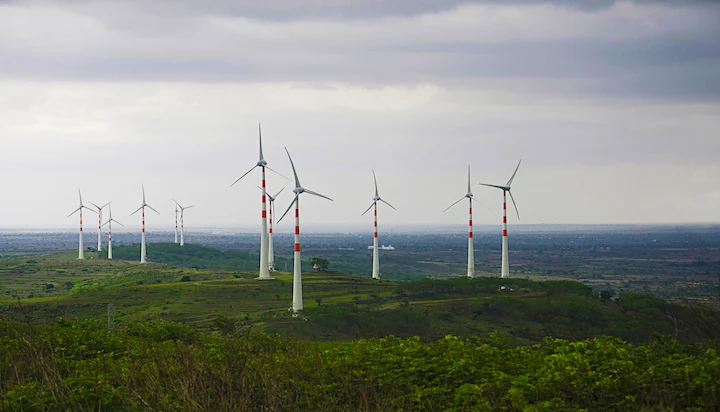Ever since Prime Minister Modi announced the National Hydrogen Mission on Independence Day this year, Green hydrogen as a potential source of clean energy has acquired much traction and salience. In fact, Finance Minister Nirmala Sitharaman in her budget speech this year proposed to launch a Hydrogen Energy Mission.
With India making impressive progress in renewables in the recent past, a successful pursuit of Green Hydrogen as an energy option will help in meeting the global commitments to environmental sustainability and climate change. Indeed only weeks back, the country pledged to accomplish a net zero emission target by 2070 at the 26th Conference of Parties to the United Nations Framework Convention on Climate Change (UNFCCC) at Glasgow in Scotland.
What is green hydrogen – how is it made?
Although hydrogen is the most abundant element available in the universe, it needs to be separated from other elements using energy. And when hydrogen is produced using renewable energy sources instead of fossil fuels, it is called green hydrogen. One of the most common ways of making it is by splitting water into hydrogen and oxygen employing an electrolyzer which is powered by electricity from renewable sources.
Green hydrogen is only one of many variants of hydrogen. There is blue, grey and other colours too. Depending on the process of production, there is blue hydrogen which is produced using natural gas and the carbon emissions are stored elsewhere using carbon capture and storage (CSS) technology. Then there is grey hydrogen which is the most common type and is produced using natural gas or methane and the carbon emissions are released in the air. Further, there is black or brown hydrogen which is produced using coal with the emissions again being released in the air, and is the most environmentally-damaging variant of hydrogen.
Speaking about how green hydrogen can impact climate, Siddharth Rastogi, Executive Director at MVS Engineering, said that since the production of green hydrogen yields only oxygen as a byproduct with zero carbon-related emissions, green hydrogen is extremely climate-friendly.
“Therefore, green hydrogen holds immense potential for a carbon-free greener economy and lifestyle. It is a matter of joy and pride that India is not only joining the global conversations on green hydrogen but also taking tangible steps towards the development of a viable indigenous value chain,” Siddharth said.
According to the International Energy Agency (IEA), a complete replacement of fossil fuel-based hydrogen production by green hydrogen would save the world around 900 million tonnes of carbon dioxide currently produced every year.
Green hydrogen as fuel
There are a number of industries and sectors where green hydrogen can be used to good effect. They could range from oil refining to industry and manufacturing to power and energy to agriculture to transportation and storage. More specifically, it can be used to make steel and cement, ammonia for fertilizer industry, and methanol for plastics, paints, auto parts and construction materials. Besides fuel cell electric vehicles’ (FCEV) potential for public transport, green hydrogen can also fuel long-distance trucking, shipping and aviation. At the same time, mixed with natural gas, it can power household appliances.
Green hydrogen: Risks and disadvantages
The biggest disadvantage is that it is highly cost-intensive and therefore a deterrent for investors and policymakers, notwithstanding recent push at both global and national levels. Secondly, hydrogen is highly volatile and flammable and is considered to be 20 times more explosive than petrol. Thirdly, its production requires a lot more energy than other fuels. Fourthly, it is very difficult to redistribute and transport green hydrogen.
Source: indiatvnews.com









